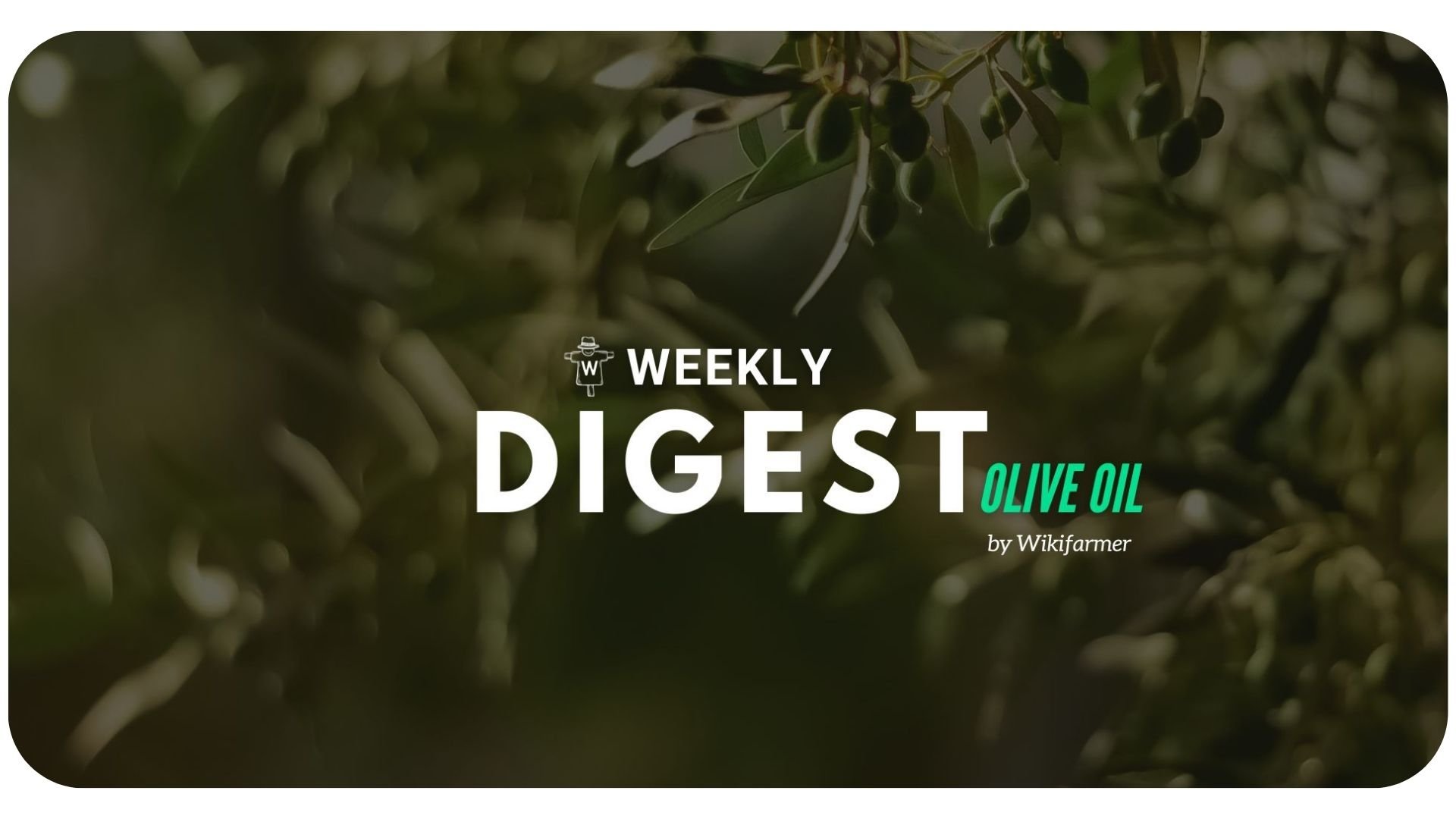Olive Oil Market Digest w44/2024

Weekly Olive Oil Market Updates
As the olive oil harvest season progresses, European producers and buyers navigate various market challenges influenced by weather, demand, and pricing dynamics. Our weekly digest presents an in-depth look into the latest developments across Spain, Greece, Italy, and Portugal, with insights sourced from Wikifarmer and our team of industry experts, along with price data from the Union of Olive Oil-Producing Municipalities of Crete, PoolRed, and Ismea Mercati.

Spain's olive harvest is off to a slow start this season, as heavy rains have delayed olive fruit picking. While many mills have gathered interesting quantities of new oil, much of the early harvest has gone towards fulfilling contracts established in previous months. As a result, fresh extra virgin olive oil is seeing prices close to 7 euros per kilo for good quality.
However, buyer demand remains muted, creating a calm market that could make producers uneasy. This restrained buyer activity, combined with higher production levels, may apply downward pressure on prices—a trend Spanish packers are closely watching. Packers, who are low on stock, are anticipated to make purchases in the coming weeks, but they are waiting with hopes of a favorable price drop.


The Greek olive oil market is also experiencing a price decline, however more gradually than Spain. Industry experts predict that, in the coming weeks, Greek prices may eventually align with those of other producing countries. Italian buyers, who typically seek Greek olive oil, are hesitating to engage at current prices, leading to a cautious standoff that adds an element of unpredictability to the market. How this will affect both supply and demand remains to be seen, but it’s clear that Greek prices are in flux.
In Italy, the olive oil market is largely at a standstill. The price of new oil stays above 9 euros per kilo, deterring potential buyers. Although yields are rising, the high cost of olives continues to be a concern, as many growers are hesitant to press olives at such elevated prices. This delay is partly attributed to unusually high temperatures, prompting growers to wait until they can mill under better conditions to produce high-quality oil. While the situation remains fluid, there is an evident tension between high costs and limited buyer interest.
In Portugal, the campaign is just beginning. Similar to Spain, early contracts are now being delivered, with new oil prices hovering around 7 euros per kilo. Buyer interest, however, remains low at this price point. Recent rains have brought cooler temperatures to both Spain and Portugal, benefiting the quality of the olive oil produced. However, there is some concern about the high volume of water from the recent rainfalls potentially impacting the olives, as it may complicate processing and produce flatter-tasting oils. The extent of this impact will only become apparent as the harvest progresses.
Valencia's floods impact olive oil trade
The catastrophic floods in the Valencia region have significantly impacted the olive oil market, as Valencia is a key hub for transporting tanks from Spain and Portugal to Italy. Specifically, there is a port where these tanks are loaded onto ships. The situation is critical, and next week will be crucial for understanding the timeline needed to restore the road network and the feasibility of embarking the tanks.
Spanish olive oil crisis: Limited supply and global demand impact
The 2024/25 olive oil season begins with Spain, the world’s leading producer, grappling with a critical shortage. Starting with stocks below 190,000 tons, Spain cannot fully meet either domestic or global demand. This shortfall is expected to strain supply chains and push up consumer prices for this Mediterranean staple. The Ministry of Agriculture, Fisheries, and Food reports a slight recovery in production at 1,289,000 tons, yet this remains around 275,000 tons below typical market needs. Compounding the issue, low yields in neighboring Italy, a key Spanish olive oil buyer, add further strain on availability.
In addition, Cooperativas Agro-alimentarias de España calls this a “recovery” year but warns that final stocks will likely reach only 256,000 tons, far below necessary levels. Also it is noted the urgent need for structural changes and technological advances since the industry's reliance on climate will continue to make it vulnerable to volatile prices and limited supply. Meeting the final destination of the supply chain for consumers, this shortage means higher prices across the value chain, affecting everyone from olive growers to end consumers.
Powerful solutions for you-webp.webp?width=277&height=277&name=Online%20course%20(3)-webp.webp)
Impactful data: our price insights tool 📈
Analyze historical trends and compare prices across countries or categories.

Education to support sourcing decisions 🎓
Online course: Sustainable Olive Oil Production, Quality, and Economics
.png?width=450&height=87&name=New%20Logo%20(1).png)

